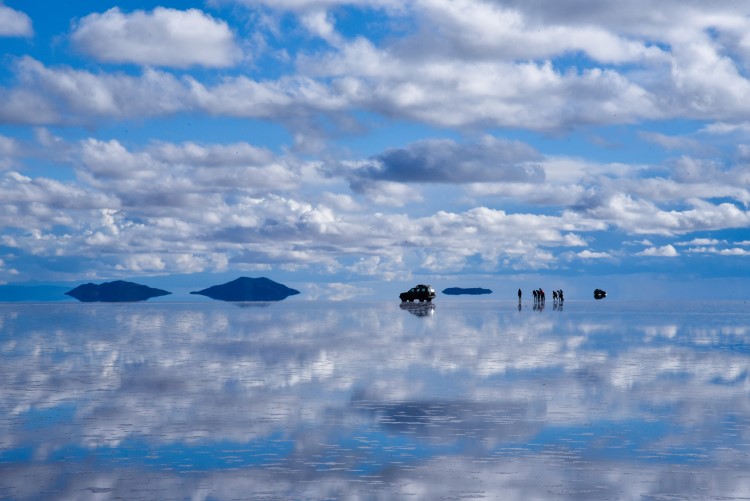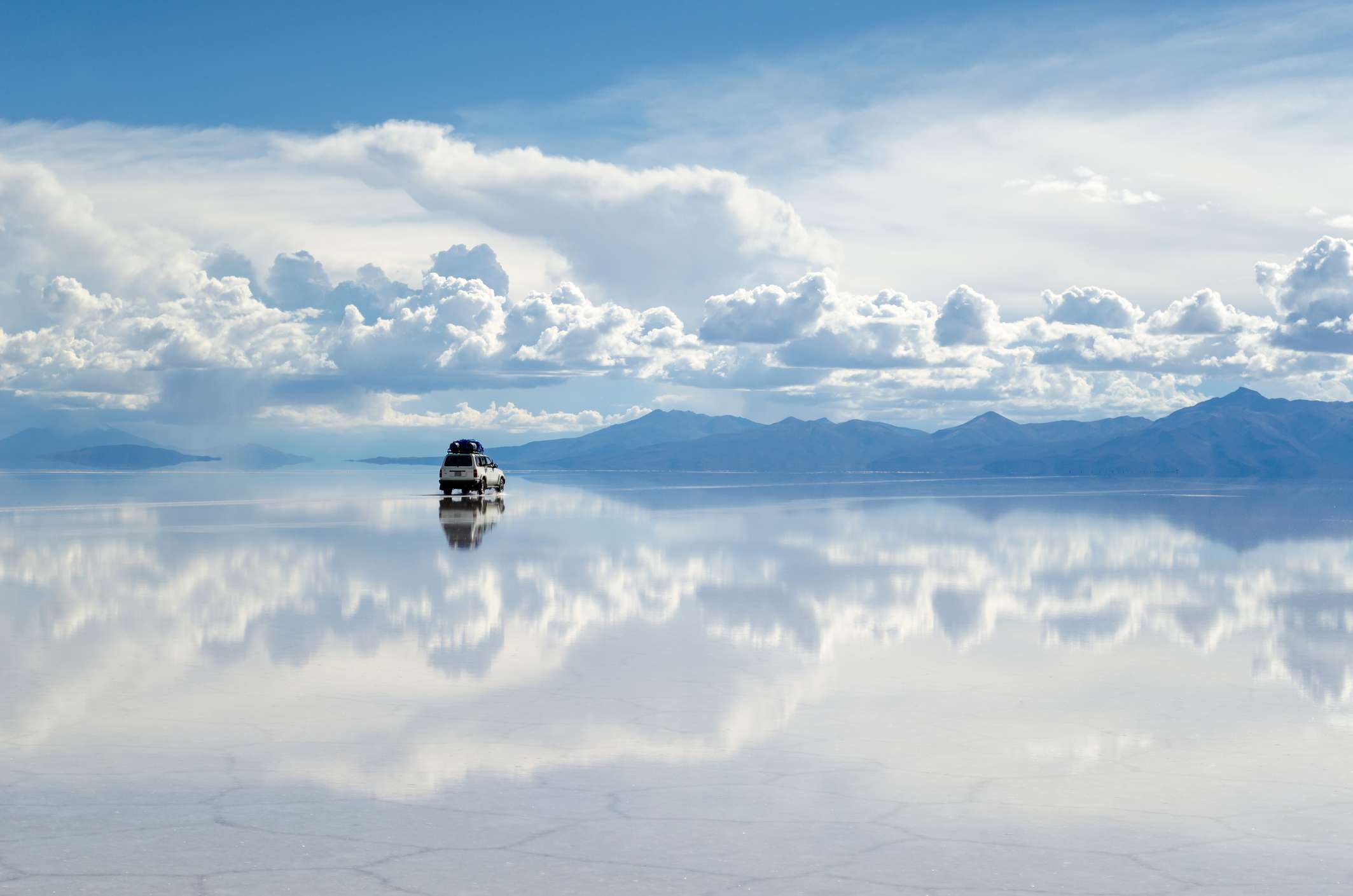On Earth, there are still absolutely fantastic places where you get the feeling of being on another planet. Salar de Uyuni (Spanish: Salar de Uyuni), or simply Uyuni, is one such amazing place.
Uyuni is considered the largest salt marsh on Earth, with an area of 10.6 km². It is a dried-up salt lake in the south of the high-altitude desert plain Altiplano (Spanish Altiplano), located in Bolivia, at an altitude of about 3.7 thousand meters above sea level. The salt marsh is located in the departments of Oruro (Spanish: Oruro) and Potosí (Spanish: Potosí) in the southwest of the country.
Thousands of tourists from all over the world come here every year to admire the endless salt expanses sparkling in the sun, which change their color more than once during the day, visit unique salt hotels, watch ancient volcanoes and flocks of pink flamingos.

Education and geology
The geological history of the Uyuni salt marsh consists of the successive transformation of several large lakes. About 40 thousand years ago, the current salt marsh was part of Lake Minchin (Spanish: Lago Minchin), which even earlier stood out from the ancient glacial Lake Ballivian (Spanish: Ballivian). After the drying of a huge reservoir, 2 lakes that still exist to this day, Poopo (Spanish Lago Poopо) and Uru-Uru (Spanish Lago Uru Uru), as well as 2 salt marshes: Uyuni and Salar de Coipasa (Spanish Salar de Coipasa) remained. .
Both salt marshes are separated from each other by a chain of hills. Lake Poopo is adjacent to the large lake Titicaca (Spanish: Titicaca). During the rainy season, lakes Poopo and Titicaca overflow their banks, causing flooding of the salt marshes. A small layer of water covering the salt layer turns the salt desert into a giant mirror. This spectacle cannot be described in words: the sky above your head and under your feet creates an indescribable feeling of “floating in the air”.
In the center of the Uyuni salt marsh there are several “islands”, which are the remains of ancient volcanoes. Today, their surface is covered with brittle deposits consisting of mineral fossils and algae. From below, lake silt is interspersed with layers of an aqueous solution (brine) saturated with lithium chloride, sodium chloride and magnesium chloride.
The economic importance of the salt marsh
The Uyuni salt marsh is of great importance for the economy of Bolivia.
The reserves of salt on the territory of the Uyuni salt marsh are truly enormous: according to rough estimates of experts, the salt marsh contains more than 10 billion tons of salt, of which more than 25 thousand tons are mined annually.
Secondly, the almost perfectly flat surface of the salt marsh (the average height difference over its entire territory is no more than 1 m) serves as the main automobile route in the Altiplano during the dry season.
Thirdly, the lithium chloride found here in significant quantities is used to extract lithium, which is widely used in the battery industry. About 100 million tons of lithium, i.e. 50-70% of its world reserves are located in the salt marsh.
Fourth, thanks to dry air, clear skies, a large flat surface area and high albedo (from the Latin “albedo”, a characteristic of the reflective properties of a surface) in the presence of even a small layer of water, the Uyuni salt marsh is actively used as an excellent tool for testing and calibration of remote sensing instruments for orbiting satellites.

Fifthly, the unique salt marsh is an unusually popular tourist route.
Seasonal Effects
During the rainy season (November – March), the salt marsh is covered with a layer of water up to 30 cm, which creates an amazing mirror effect: clouds float across the sky and underfoot. You can watch simply unimaginable landscapes, when cars and people seem to soar in the clouds.
In the dry season, during the evaporation of water, polygonal cells resembling honeycombs are formed on the surface of the salt marsh. Mostly there are 6-gons, but there are 5-gons, 7-gons and even 8-gons.
Climate
In summer, the air temperature in the area of the Uyuni salt marsh fluctuates around +22°C. Hot days usually give way to cold nights. Winter (June-August) is considered the most tourist season here, although during the day the air warms up to a maximum of +13°C, and at night the temperature can drop sharply to -10°C. In the dry season, the landscape of the salt marsh is exclusively white.
The rainy season lasts from November to March, during this period the surface of the salt marsh turns into a titanic mirror.
Flora and fauna
The territory of the world’s largest salt marsh is practically devoid of vegetation, with the exception of small shrubs and giant cacti (up to 12 m high). In the summer, from November to December, you can see an absolutely amazing picture here: hundreds of amazing pink flamingos walking along the mirror-like surface of the lake. Every year, 3 species of South American flamingos arrive in Uyuni for breeding: the Chilean, Andean and James flamingos (lat. Phoenicoparrusjamesi).
About 80 species of birds also live in the vicinity of the salt marsh, including the Andean goose, the horned coot and a species of hummingbird called the Andean mountain star.
In some parts of the salt marsh there are Andean foxes and viscaches, small rodents like our rabbits.
